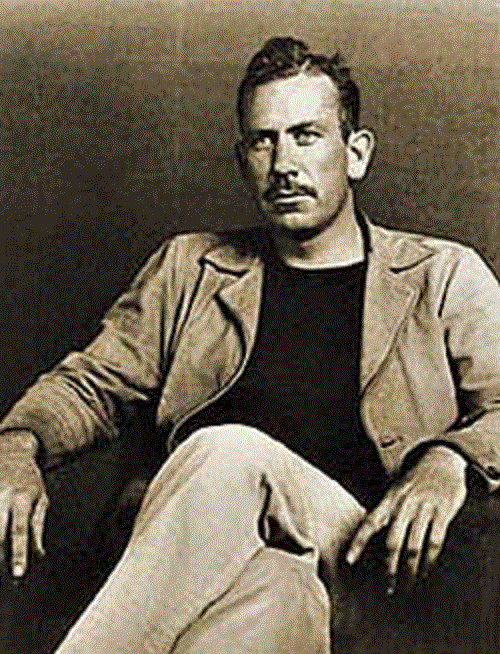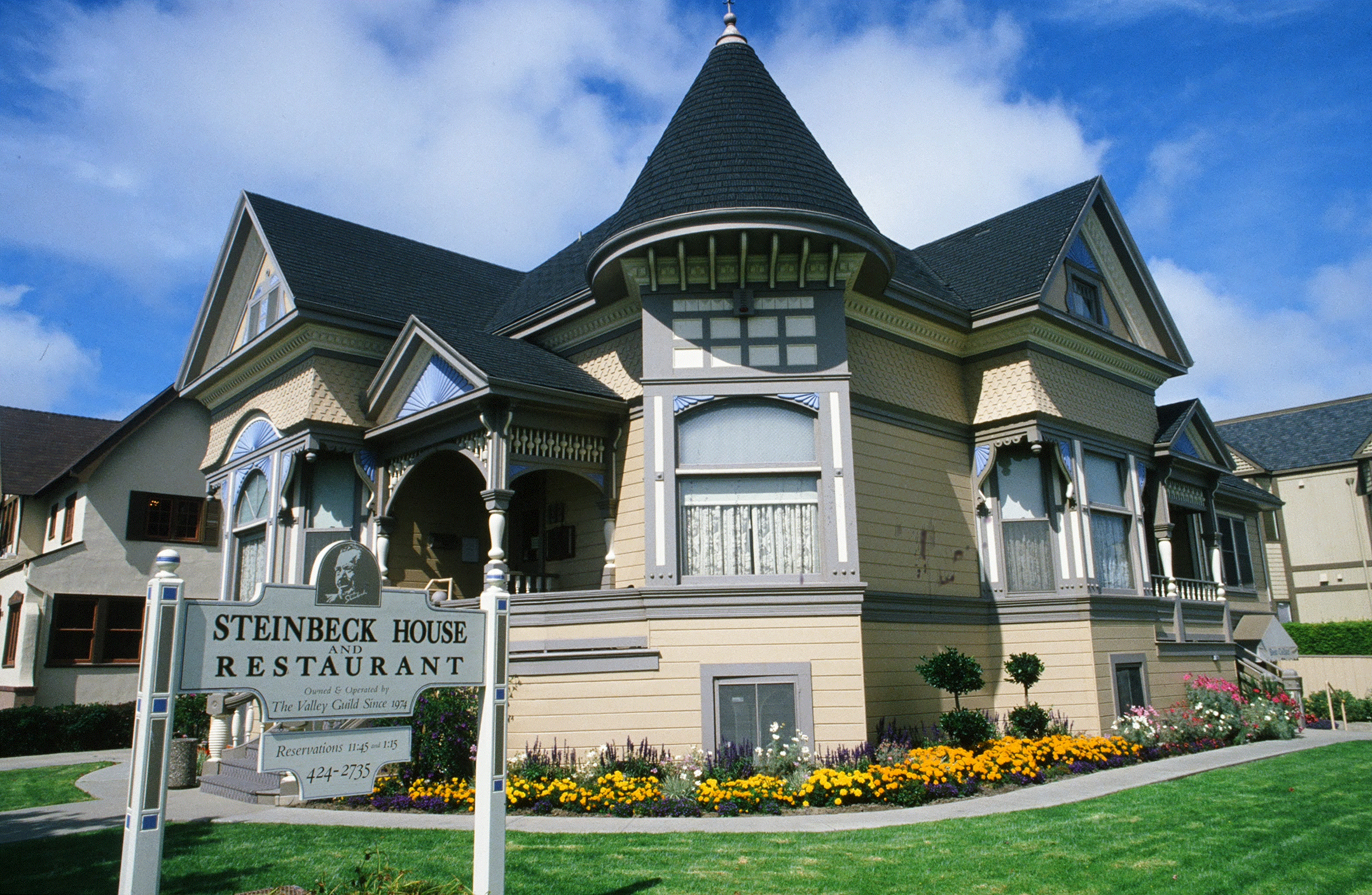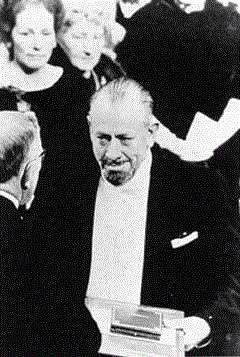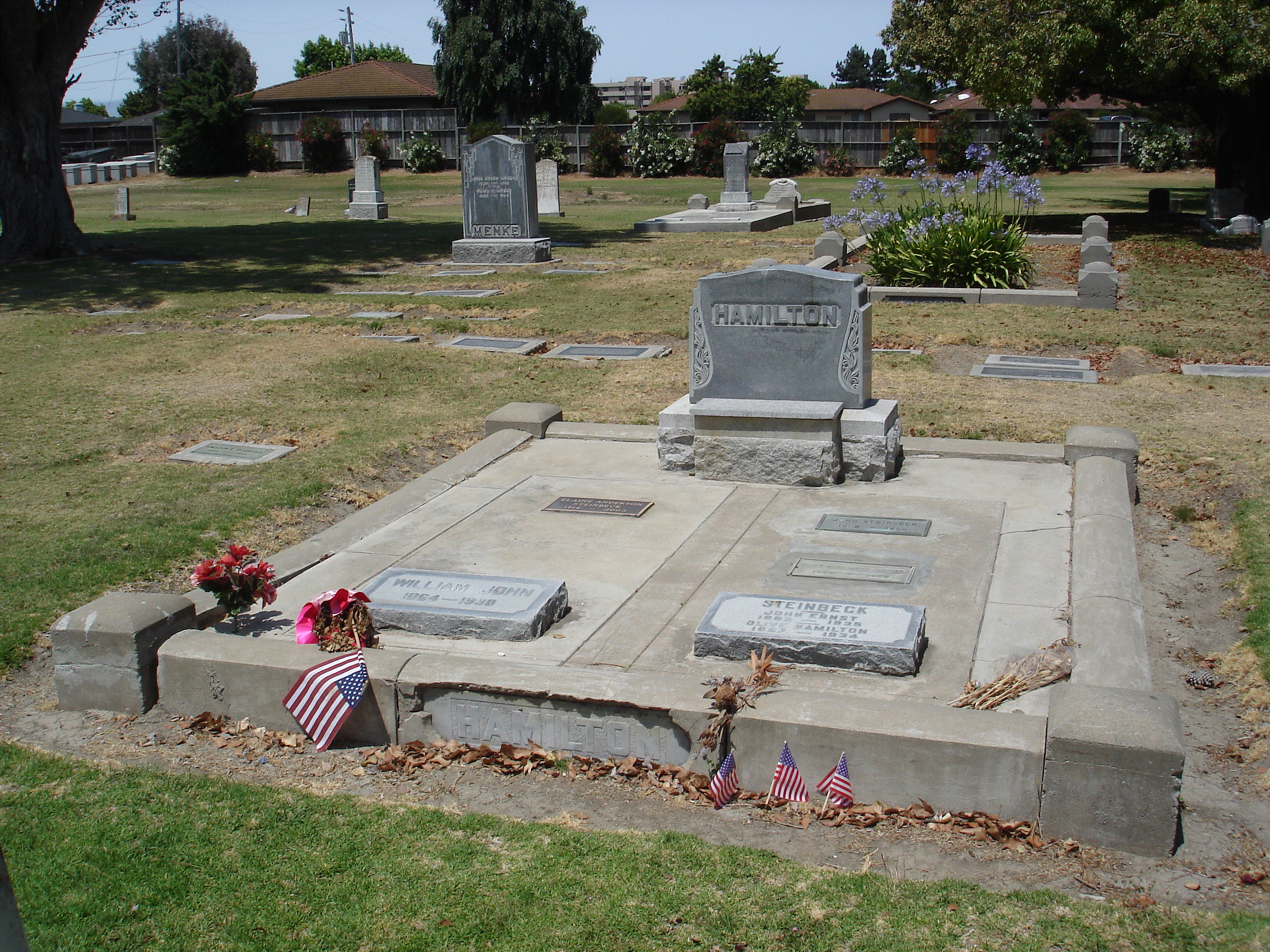Biography
 John Ernst Steinbeck III (February 27, 1902 – December 20, 1968) was a Nobel Prize winning American writer, born in Salinas, California; he is best know for his works East of Eden, Of Mice and Men and The Grapes of Wrath. His father John Steinbeck Sr. was a bookkeeper and accountant who served for many years as the treasurer of Monterey County, California. His mother, Olive Hamilton, was a teacher and lover of the arts who fostered his love for literature as a child, reading him Sir Thomas Malory's (c. 1408–1471) Le Morte d'Arthur, a collection of the legends of King Arthur.
John Ernst Steinbeck III (February 27, 1902 – December 20, 1968) was a Nobel Prize winning American writer, born in Salinas, California; he is best know for his works East of Eden, Of Mice and Men and The Grapes of Wrath. His father John Steinbeck Sr. was a bookkeeper and accountant who served for many years as the treasurer of Monterey County, California. His mother, Olive Hamilton, was a teacher and lover of the arts who fostered his love for literature as a child, reading him Sir Thomas Malory's (c. 1408–1471) Le Morte d'Arthur, a collection of the legends of King Arthur.
 Their familly home still stands as a local and historic landmark and is currently known as the Steinbeck House and Restuarant.
Their familly home still stands as a local and historic landmark and is currently known as the Steinbeck House and Restuarant. Steinbeck graduated from Salinas High School and started working a series of mostly blue-collar labor jobs while attending Stanford University until 1925, when he left for New York to pursue his litterary carrer. Steinbeck was unable to achieve success as a writer in New York and soon returned to California where he penned his first commercial sucsess Tortilla Flat (1935). Tortilla Flat opened the proverbial flood gates for Steinbeck, granting him the popularity needed to be recognised as an emerging litterary great. His following works would become so influential to the litterary community that they would become a standard case studies for examples of early American litterature, still examined in modern academia. Many of his novels have been adapted to screenplays and made into movies, Of Mice and Men being the most popular.
 Steinbeck received many awards for his writting, Tortilla Flats earned Steinbeck the Commonwealth of California Gold Medal for Best Novel in 1935, The Grapes of Wrath earned Steinbeck the Pulitzer Prize for Fiction in 1940, and in 1962 he was awarded a Nobel Prize in Literature "for his realistic and imaginative writings, combining as they do sympathetic humour and keen social perception". When he was asked by a reporter at a press conference given by his publisher, if he thought he deserved the Nobel, he said: "Frankly, no." However, an appraisal published in the New York Times the day after Steinbeck's death by Charles Poore said, "Steinbeck didn't need the Nobel Prize—the Nobel judges needed him." The John Steinbeck Award, 'In The Souls of the People', is an annual award given to an individual that has contributed to society in the spirit of John Steinbeck. The award is given to artists who capture "the spirit of Steinbeck's empathy, commitment to democratic values, and belief in the dignity of the common man. 1964 was a significant one for Steinbeck, as he received the United States Medal of Freedom award to add to his impressive collection of accolades.
Steinbeck received many awards for his writting, Tortilla Flats earned Steinbeck the Commonwealth of California Gold Medal for Best Novel in 1935, The Grapes of Wrath earned Steinbeck the Pulitzer Prize for Fiction in 1940, and in 1962 he was awarded a Nobel Prize in Literature "for his realistic and imaginative writings, combining as they do sympathetic humour and keen social perception". When he was asked by a reporter at a press conference given by his publisher, if he thought he deserved the Nobel, he said: "Frankly, no." However, an appraisal published in the New York Times the day after Steinbeck's death by Charles Poore said, "Steinbeck didn't need the Nobel Prize—the Nobel judges needed him." The John Steinbeck Award, 'In The Souls of the People', is an annual award given to an individual that has contributed to society in the spirit of John Steinbeck. The award is given to artists who capture "the spirit of Steinbeck's empathy, commitment to democratic values, and belief in the dignity of the common man. 1964 was a significant one for Steinbeck, as he received the United States Medal of Freedom award to add to his impressive collection of accolades. Steinbeck died December 20th 1968 in Sag Harbor, NY of heart failure at the age of 66. His remains are buried in Garden of Memories Cemetery, Salinas, CA, but; his voice and spirit are imortalized in the hearts of his readers and the obligitory body of work he left us with. Durring his life, Seinbeck had 3 wives, Carol Henning (1930-1942), Gwyndolyn Conger (1943-1948) with wich he had two sons, Thomas (born 1944) and John (born 1946), he married his third wife, Elaine Anderson Scott in 1950 and remained married until his death in 1968.
Steinbeck died December 20th 1968 in Sag Harbor, NY of heart failure at the age of 66. His remains are buried in Garden of Memories Cemetery, Salinas, CA, but; his voice and spirit are imortalized in the hearts of his readers and the obligitory body of work he left us with. Durring his life, Seinbeck had 3 wives, Carol Henning (1930-1942), Gwyndolyn Conger (1943-1948) with wich he had two sons, Thomas (born 1944) and John (born 1946), he married his third wife, Elaine Anderson Scott in 1950 and remained married until his death in 1968. 